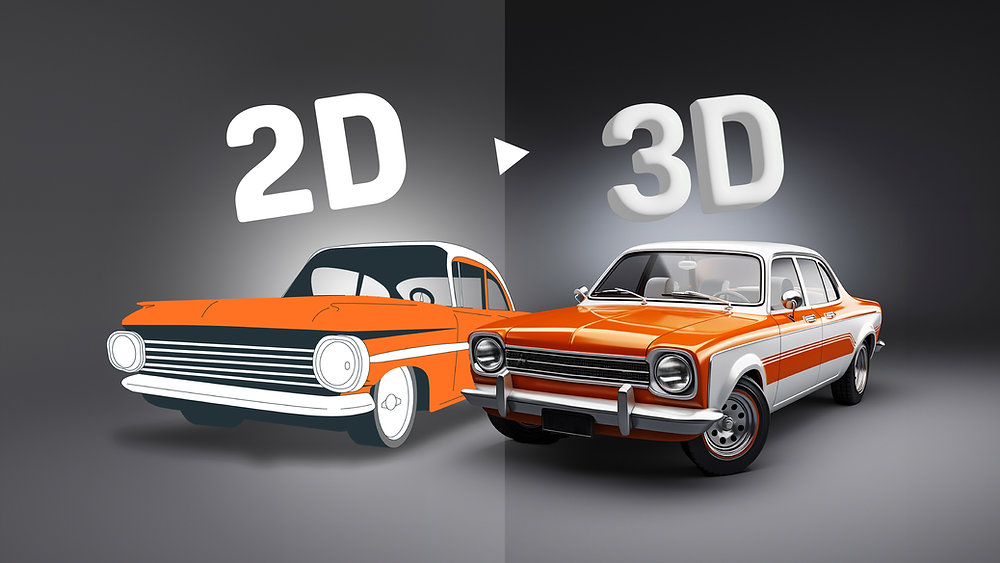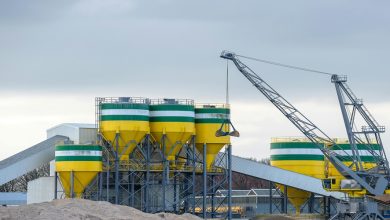From Photos to 3D Models and How AI is Making Conversion Easier

In the world of digital art and photography, the line between imagination and reality is increasingly blurred. AI has opened up new horizons, making it easier than ever to transform 2D photos into stunning 3D models. This technological leap offers photographers and digital artists an array of possibilities to elevate their work. Let’s explore how AI is revolutionizing the conversion process and how you can leverage this technology to unlock your creative potential.
How AI Enhances Creativity
AI doesn’t just save time; it enhances creativity. By automating repetitive tasks, artists can spend more time on the conceptual aspects of their work. This shift allows for greater experimentation and innovation, leading to more unique and compelling creations.
Imagine capturing a simple photograph and turning it into a fully realized 3D scene. AI can handle the heavy lifting, converting your image into a detailed model while you focus on adding your creative touch. This symbiotic relationship between human creativity and machine efficiency opens up new avenues for artistic expression.
The ability to quickly iterate on designs is another significant benefit. With AI, you can generate multiple versions of a model, experimenting with different styles and techniques until you find the perfect fit. This flexibility encourages artists to push the boundaries of their creativity, exploring new ideas and concepts without the fear of wasting time or resources.
The Role of Machine Learning in 3D Modeling
Machine learning is at the heart of AI’s ability to convert image to 3d model and other related tasks. This technology enables computers to learn from data, identifying patterns and making decisions based on that information. In the context of 3D modeling, machine learning algorithms analyze millions of images to understand how objects look from different angles.
By training these algorithms on diverse datasets, developers can create powerful tools that accurately reconstruct 3D models from 2D photos. This process involves several steps, including object recognition, depth estimation, and texture mapping. Each step requires a deep understanding of the underlying data, which machine learning provides.
The result is a highly accurate and detailed 3D model that captures the essence of the original photo. This level of precision is crucial for artists who rely on subtle details to convey their vision. Machine learning ensures that these details are preserved, allowing for more realistic and lifelike models.
Practical Applications for Photographers
For photographers, the ability to convert photos into 3D models opens up a world of possibilities. Wedding photographers can also benefit from this technology. By converting photos into 3D models, they can create unique keepsakes for their clients. Imagine a 3D-printed model of the wedding venue, complete with intricate details and textures. This personalized touch adds value to their services, setting them apart from competitors.
Commercial photographers can use 3D models to showcase products in a more dynamic way. Instead of static images, they can create interactive models that allow customers to view the product from all angles. This immersive experience can drive engagement and increase sales, providing a competitive edge in the market.
Digital Artists and 3D Modeling
Digital artists can take their work to new heights with AI-driven 3D modeling. This technology allows them to experiment with different styles and techniques, pushing the boundaries of their creativity. By converting 2D photos into 3D models, artists can explore new dimensions and perspectives, adding depth and realism to their work.
One exciting application is in the realm of virtual reality (VR) and augmented reality (AR). By creating 3D models from photos, artists can develop immersive experiences for VR and AR platforms. This capability opens up new opportunities for storytelling and interactive art, engaging audiences in ways that were previously unimaginable.
Future Trends in AI and 3D Modeling
The future of AI and 3D modeling is incredibly promising. As technology continues to evolve, we can expect even more sophisticated tools and techniques to emerge. One exciting trend is the integration of AI with other emerging technologies, such as blockchain and the Internet of Things (IoT).
Blockchain technology can enhance the security and authenticity of digital art, providing a tamper-proof record of ownership and provenance. This capability is particularly valuable for artists who want to protect their work from plagiarism and unauthorized use.
The IoT can also play a role in advancing 3D modeling. By connecting devices and sensors, artists can gather real-time data to inform their designs. This connectivity allows for more dynamic and responsive models, creating richer and more engaging experiences for audiences.
Conclusion
AI is revolutionizing the world of digital art and photography, making it easier than ever to convert 2D photos into stunning 3D models. By leveraging this technology, photographers and digital artists can enhance their creativity, streamline their workflow, and create more engaging and dynamic experiences for their audiences.
Whether you’re a seasoned professional or just starting, AI-driven 3D modeling offers a wealth of opportunities to elevate your work. Stay informed about the latest developments, experiment with new techniques, and don’t be afraid to push the boundaries of your creativity. The future of digital art is here, and it’s more exciting than ever.





